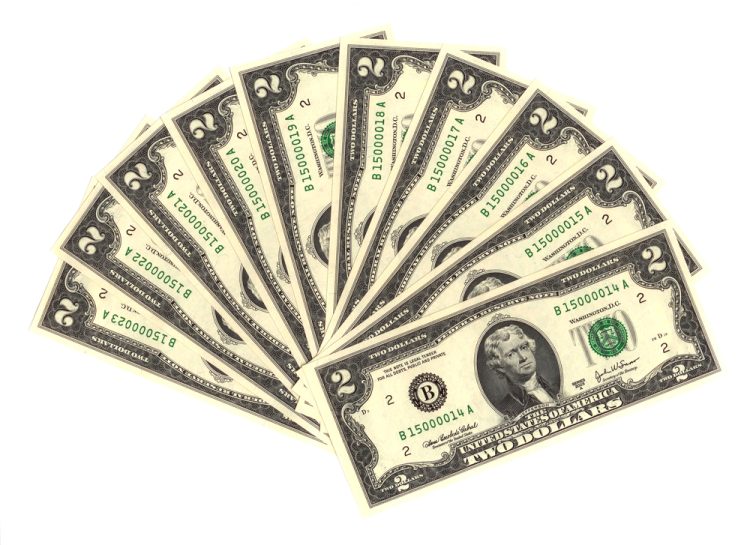If you have a $2 bill laying around, you might want to check the serial number.
According to Heritage Auctions — the largest collectible currency auction house in the world — $2 bills have recently caught the attention of collectors, with some rare examples going for thousands at auction.
“Americans don’t spend $2 bills, because they think they are markedly scarce. However, the numbers tell us a different story,” Dustin Johnston, vice president of Heritage Auctions, told MarketWatch. “Just in the last five years, they’ve printed 100 million $2 bills. The fact that they don’t circulate and are kept as mementos is a little bit odd. Very few of them have numismatic or collector value.”
The value of a $2 bill is all dependent on three things: the serial number, the date and the note’s condition.
“What we look at is fancy serial numbers,” Johnston said. “A serial number ‘1′ for a 1976 $2 bill would be worth $20,000 or more. But for a majority of those people holding 1976 $2 bills, they are only worth face value. There are very few that actually exceed face value.”
According to MarketWatch, other highly-prized serial numbers include “solids” — when all the numbers are the same, like 2222222222 — and “ladders” — where the serial number is sequential, like 12345678910.
If you have a $2 bill and want to check its value, visit the Heritage Auctions website, where you can upload an image of your bill.












